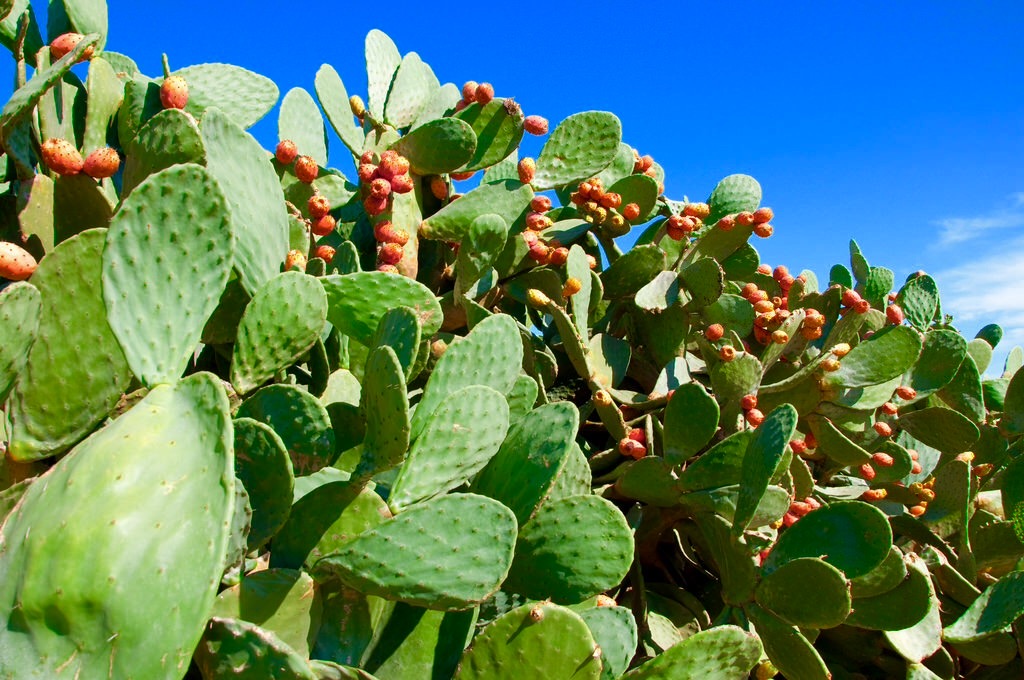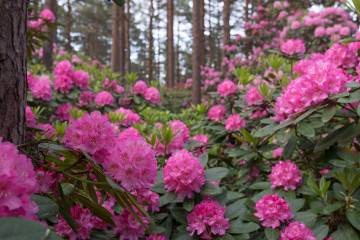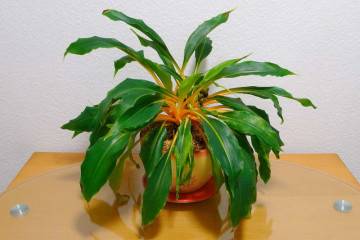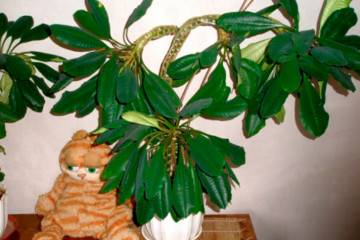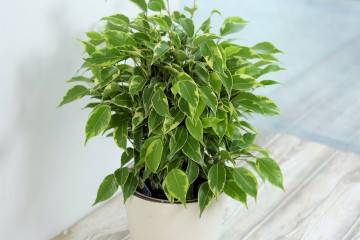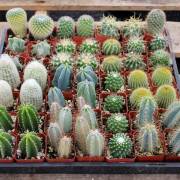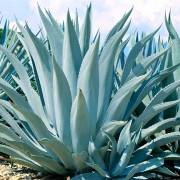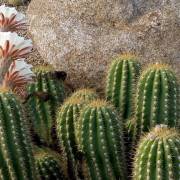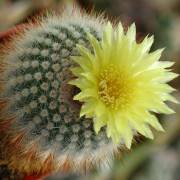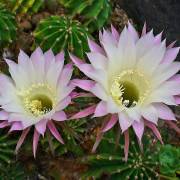Opuntia fig - description and care
Content:
Cacti are one of the most ancient plants. They were used not only as a decoration of the local area or premises, but also for the healing of the body. Further information about one of the varieties of cactus - fig prickly pear: what it is, what it looks like, features of care, methods of reproduction.
What does it look like, which family it belongs to
The description says that the fig prickly pear is a shrub that reaches a height of 4 meters, spreading out to 2 meters in width. It consists of flat-shaped jointed shoots. The root system develops more in width than in depth.
The surface of the plant is covered with bristles. Beautiful flowers are formed at the tips of the shoots, from which edible fruits are then formed. The fig prickly pear belongs to the cactus family. It has several names: prickly pear, Indian fig, sabra, Indian prickly pear.
Healing properties
The fruits and shoots contain a large amount of nutrients that have the following therapeutic effects:
- remove toxins from the body;
- used as an antioxidant;
- boost the immune system;
- cleanse blood vessels;
- eliminate chronic inflammatory processes;
- contribute to the normalization of sleep.
The extract from prickly pear leaves can lower blood glucose and sugar levels. The calcium in the fruit prevents many dental problems. The use of fig prickly pears promotes an increase in metabolism and, as a result, weight loss.
History of appearance
In nature, the habitat of prickly pears is the arid lands of Mexico, Brazil, Africa. Mankind domesticated the plant more than 5 centuries ago: it is known that useful fruits were used as a medicine already in the 15th century. According to some reports, the cactus was eaten by the Mayan Indians.
Currently, the shrub can be found in the Mediterranean countries, in the Crimea. The culture is named after the city of Opus, which is located in Greece; fig because the fruits of the plant are similar to those of figs.
Features of caring for a plant at home
Cacti don't require much maintenance. But in order for them to bloom, you need to fulfill their requirements for the conditions of detention.
Temperature
The fig prickly pear easily tolerates high temperatures. In summer, it feels comfortable at 25-35 ° C. During this period, the plant can be taken out into the fresh air, placed on a terrace or under the crown of trees. In winter, the plant needs a cooler content: it is enough for the room temperature to reach 13-14 ° C.
Lighting
The prickly pear is placed on a window of south or southwest orientation. On a hot afternoon, the direct rays of the sun should not fall on the shrub, otherwise burns may appear on the shoots.
Watering
Abundant watering of fig prickly pears is not required: the earth is moistened only after its top layer dries. In the autumn-winter period, the plant is watered once a month. If the planting is kept at a temperature of 6-7 ° C, irrigation is stopped altogether.
Spraying and moisture
Indian prickly pear tolerates dry air well, so it does not need to be sprayed. On the contrary, falling water droplets on the stems can provoke the appearance of fungal diseases. In winter, a container of water can be placed on the windowsill next to the plant to prevent rapid evaporation of moisture from the soil and shoots.
Priming
The substrate should be loose, air and water permeable. It can be prepared from the following components:
- leafy land;
- sod land;
- sand;
- perlite.
If the grower does not have the opportunity to prepare the soil mixture on his own, it can be purchased at a specialized store. They choose a substrate for cacti: it contains all the necessary opuntia substances.
Top dressing
Opuntia does not need abundant fertilization: it is enough to water it once a month in the spring-summer period. To do this, choose a universal fertilizer for cacti, and apply it according to the instructions. In winter, the plants are not fed at all.
Features of winter care
In winter, prickly pears, if possible, are placed in a cool room with an air temperature of 13-14 ° C. Watering is significantly reduced, not allowing the plantings to dry out completely. Top dressing in winter is not done at all. Plants during this period do not need to be rearranged from place to place or even turned.
When and how it blooms
The prickly pear blooms at the age of 10 years. From spring to early autumn, bisexual flowers, similar to roses, are formed on the tops of the shoots. In color, they are golden, red, orange. During flowering, plants cannot be transplanted, otherwise the buds may fall off. After the flower dries, an edible fruit is formed, covered with thorns.
Pruning
Pruning is carried out only if the shoots are struck by diseases, they began to dry out. Perform the procedure at any time. Another reason for pruning is that the bush is too overgrown and needs thinning. In this case, the procedure is performed in the spring or early summer.
How does it multiply
At home, the fig prickly pear can be diluted with seeds and cuttings. The first method is long, laborious, so growers rarely use it. Fig seed has a hard shell, so it is first processed with sandpaper or a file. Opuntia is propagated from spring to mid-summer.
Germinating seeds
The prepared seeds are kept in a disinfectant, then the following actions are performed:
- drainage is laid out in a low container;
- light, fertile soil is poured;
- the seeds of the prickly pear are spread over the surface of the substrate;
- fall asleep with a centimeter layer of soil;
- sprinkle the surface of the soil with water from a spray bottle.
After about a month, the seeds will sprout. Seedlings will need to be transplanted into separate small containers. At first, the stem of young plants will have a cylindrical shape, then, growing up, it will become flat.
Rooting cuttings
The procedure for propagation of prickly pear by cuttings is carried out as follows:
- in an adult plant, segments are cut with a sharp knife, the so-called segments;
- the places of the cuts are dried within 3 days;
- cuttings are planted, without burying, in separate small pots filled with light soil;
- the plants are placed in a bright room with an air temperature of 20 ° C.
When the cuttings start to grow, they are transplanted into other containers.
Transfer
After the purchase, the bush is left for 2-3 weeks for adaptation, then planted in a new pot.The root system of the prickly pear is not very developed, so the capacity is selected shallow, but wide. Since prickly pear does not like excess moisture, drainage from small stones, expanded clay, sand is laid out on the bottom of the container.
Then a loose substrate is poured into the pot and the prickly pear is planted in it by the transshipment method (with a lump of earth).
Possible growing problems and diseases
Opuntia, although unpretentious, can lose its decorative appearance due to mistakes in care. Possible problems are as follows:
- Brown spots on the shoots. This can happen due to excess moisture in the soil. To remedy the situation, the affected parts are cut out, the prickly pear is transplanted into dry soil, and watering is regulated.
- Shriveled leaves. Such a problem happens with a lack or excess of moisture, a lack of light. It is required to adjust the watering, rearrange the flower pot in a brighter place.
- The bush does not grow. Perhaps this is due to a lack of nutrients in the earth. In spring and summer, prickly pears are fed with fertilizer for cacti. If the flower does not grow in winter, this is normal: during this period, the plant has a dormant period.
With a decrease in immunity, the bushes can be hit by pests. If there are too many of them, the plants are sprayed with insecticides.
Signs and superstitions
It is believed that cacti should be placed next to a computer monitor. They neutralize harmful radiation, and also release the oxygen that a person needs. But girls who want to get married should not keep this flower in the house, since it scares away applicants for her hand and heart.
It is recommended to place prickly pear in the living room: the plant will save the owners from the envious glances of guests. If the flower is kept in the office on the desktop, it will serve as a shield against attacks from bosses and colleagues. Placed in the bedroom, the bush will take over the nightmares of the owners.
Fig prickly pear is an unpretentious home flower. Caring for it is not a big deal: after studying information about its requirements for the environment, and applying knowledge in practice, the florist will achieve not only rapid growth, but also its abundant flowering.







